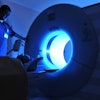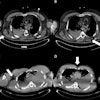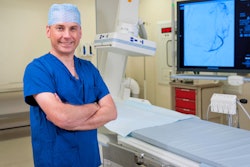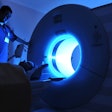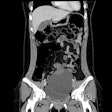Patients who receive higher cumulative doses of radiation from CT imaging do have higher death rates from prior disease than those who receive lower doses, but nearly one-third to half still remain alive a decade later, researchers have found.
The study results offer a correction to the assumption that patients who undergo many CT exams may already be too ill for clinicians to be concerned about radiation risk, a team led by Maria Mataac of Massachusetts General Hospital (MGH) in Boston noted. Mataac collaborated on the study with Xinhua Li, PhD, and senior author Dr. Madan Rehani, both also of MGH, and the findings were published on 14 July in the European Journal of Radiology.
"While the radiation doses used in modern CT scans are generally considered safe, frequent scans may pose a higher cumulative risk," they noted. "Often, when discussing the long-term radiation effects of CT doses, many question the risks with the belief that the majority of those receiving relatively high doses from recurrent CT exams are already very sick and are likely to die within a few years, negating worry about radiation risk. This assumption needs to be evaluated."
To do this, Mataac and colleagues conducted a study that included 36,545 patients who had CT exams in 2013; these individuals were categorized into four cumulative effective dose groups:
- Group A (> 0 to < 10 mSv), 38.4%
- Group B (10 to < 50 mSv), 52%
- Group C (50 to < 100 mSv), 7.5%
- Group D (≥ 100 mSv), 2.1%
Mataac's group then analyzed the death rates for each group through December 2023. They stressed that the research was not a "radiation-effect" study, writing that "we are in no way trying to imply radiation exposure from CT as a cause of death during the study period."
The team found that death rates for all dose groups peaked in the year of imaging or a year after. It also reported that one year after imaging, Group D had 6.7 times and Group C had 4.3 times the death rate of Group A. But a significant number of these patients were still alive after 10 years, with 48% in Group C and 36.7% in Group D.
| Survival rates in patients undergoing repeated CT exams over 10 years by radiation dose | |
|---|---|
| 2 years after initial CT | |
| Group | Survival rate |
| A | 90% |
| B | 84% |
| C | 63% |
| D | 50% |
| 10 years after initial CT | |
| A | 85% |
| B | 74% |
| C | 48% |
| D | 37% |
"Based on [our] data, the argument that patients who receive radiation dose over 50 mSv are sick enough to die within a few years from prior diseases is unsound," the group wrote.
The study highlights the fact that radiation protection for patients who have multiple CT exams is "worthwhile and necessary," Mataac and colleagues concluded.
"While it is true that patients receiving relatively higher doses (≥ 50 mSv) are more likely to die within the first two years of receiving such doses, nearly one-third to half remain alive a decade after their CT scans, [although] potentially facing the effects of radiation," they wrote. "This knowledge may help policymakers and practitioners."
The complete study can be found here.

